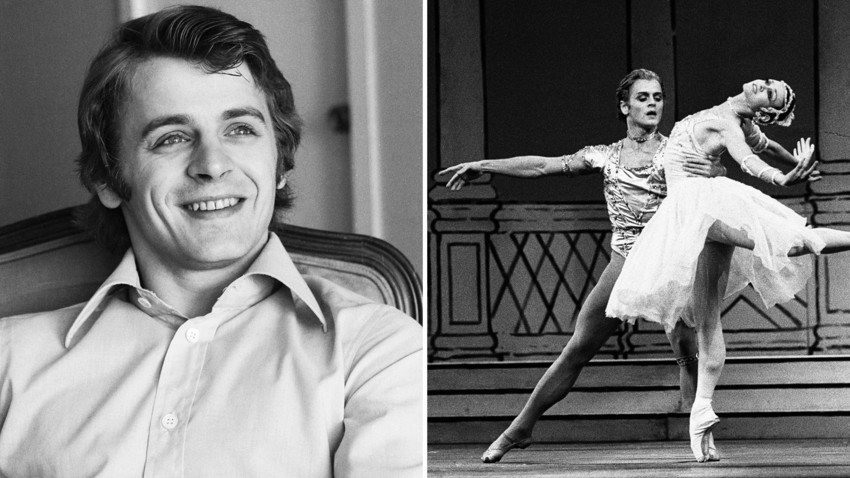
Die-hard fans of classical Russian ballet praise Baryshnikov for his powerful leaps and a lifelong passion for freedom, while his younger admirers, who first came to know him as Aleksandr Petrovsky, Carry Bradshaw’s Russian boyfriend on ‘Sex and the City’, worship him for taking contemporary ballet to a whole new level.
It seems like Baryshnikov has been swimming against the tide since childhood. He chose his battles wisely, though, and proved to be a brilliant long-distance “swimmer”. Baryshnikov’s story is an exciting tale of self-actualization and personal growth.
Like many Soviet families of the time, Mikhail’s father was a strict military man and a devoted communist, while his mother came from a peasant background. It was she who instilled a love for the arts in Mikhail. The family lived in Riga, capital of then Latvian SSR. Baryshnikov fell in love with ballet and enrolled in his first professional dance school on his own. He told his parents that he didn’t need their moral assistance. Misha (a common short form of the Russian name ‘Mikhail’) literally proved he could stand on his own feet when he was only 9. He passed the entrance exams and was accepted.
READ MORE: 5 things every Soviet child DREAMED of
Two years later, Baryshnikov moved to Leningrad (now St. Petersburg) to train at the famous ballet school (now known as the Vaganova Academy). There, he was taught by none other than Alexander Pushkin, the great Russian poet’s namesake and teacher of another ballet legend, Rudolf Nureyev, who defected to the West in 1961.
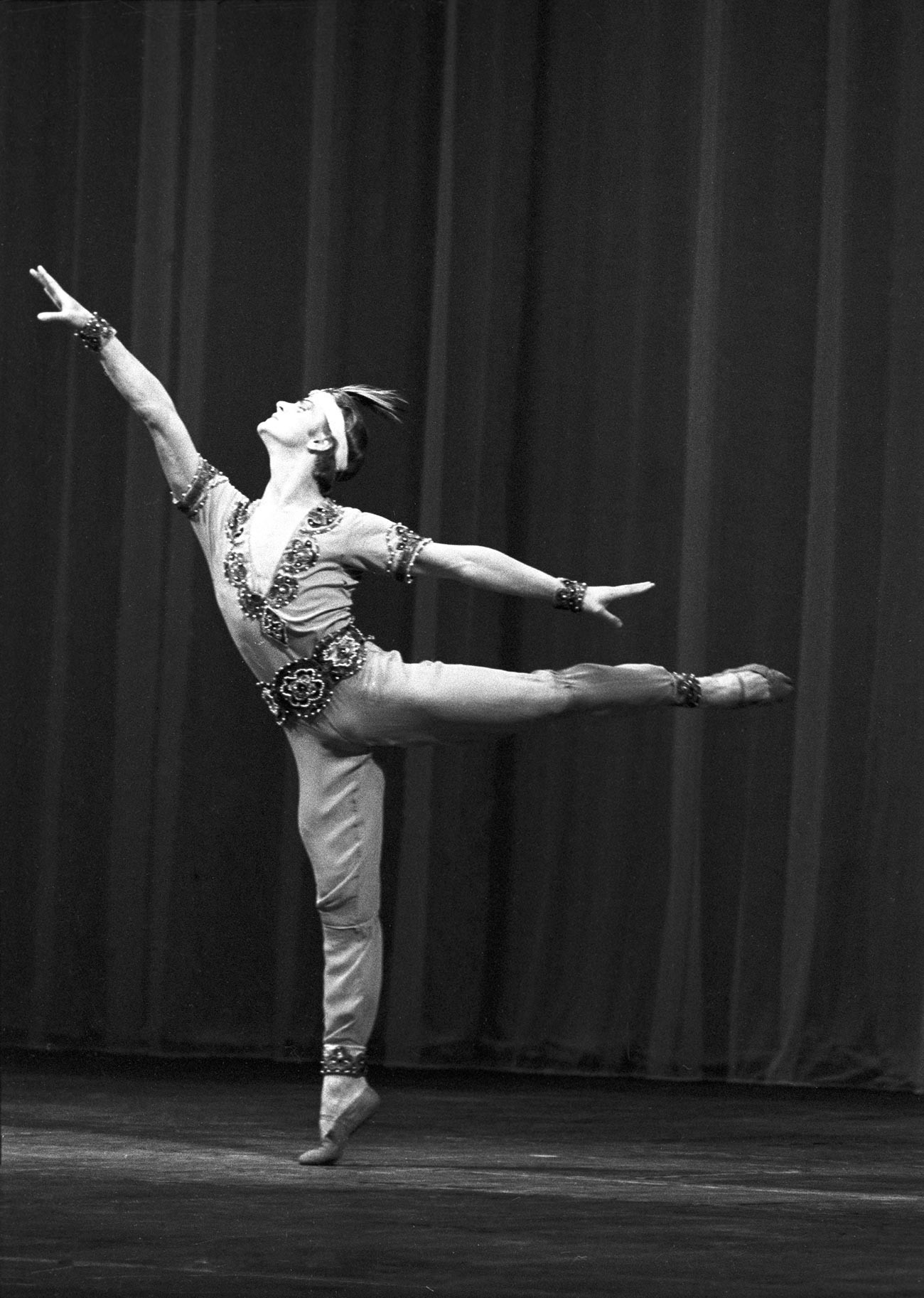
Mikhail Baryshnikov, the star of the Kirov Ballet, in 'Le Corsaire'.
Aleksandr Makarov/SputnikYears later, Baryshnikov himself would be recognized as one of the finest ballet virtuosos in the world, along with Vaslav Nijinsky and Rudolf Nureyev.
Mikhail became a member of the legendary Kirov Ballet troupe (now Mariinsky) in 1967. He gave ballet a healthy dose of his energy and intensity and rose to fame as a dancer of expressive lines, impeccable technique and powerful footwork.
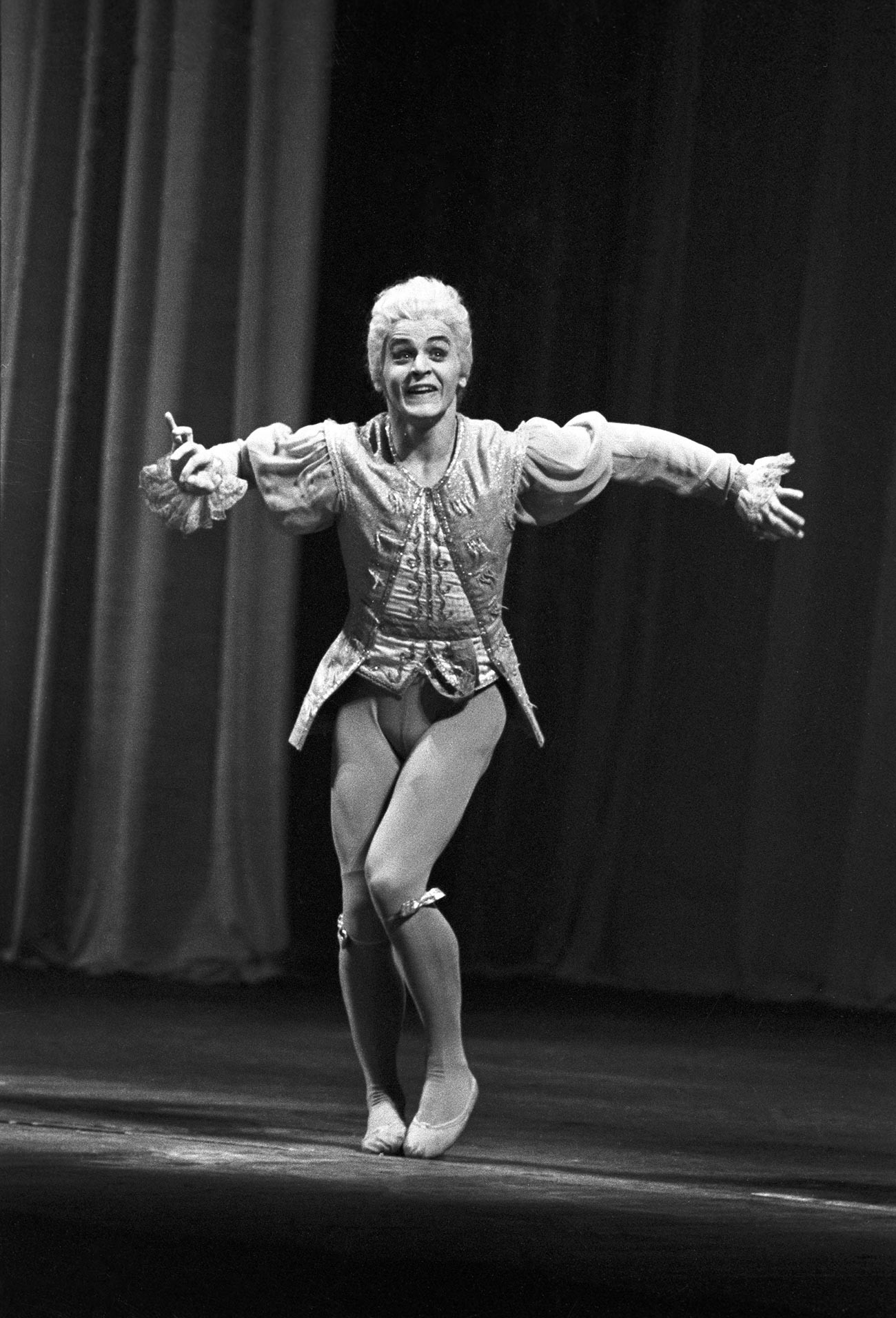
Mikhail Baryshnikov in Jakobson’s 1969 ‘Vestris’.
Aleksandr Makarov/SputnikThe charismatic Baryshnikov won accolades for his parts in Leonid Jakobson’s 1969 ‘Vestris’ and Albert in ‘Giselle’, the touchstone of the classical ballet. And yet, despite a promising future, in the USSR Baryshnikov, with his modest height of 1.68 cm (5’6 ft), was doomed to play supporting roles. This was not an option for a natural-born leader. In the Soviet Union, classical ballet deliberately locked itself inside 19th century traditions. Contemporary dance influences were not welcome. Baryshnikov, on the contrary, was in search of a wind of change and a window of opportunity. It came in the summer of 1974.
The daredevil dancer left the Soviet Union for good in 1974. 26-year-old Baryshnikov requested political asylum in Toronto after a performance by the Bolshoi Ballet. He later moved to the United States, where he joined the American Ballet Theater (ABT) as a principal star. Expressing confidence and stamina with each flawless movement, Baryshnikov took the U.S. audiences by storm with his signature part in ‘Giselle’. His dance partner was Natalia Makarova, the former prima ballerina of the Kirov Ballet, who had also defected from the USSR, but to the UK, during the company’s London tour in 1970.
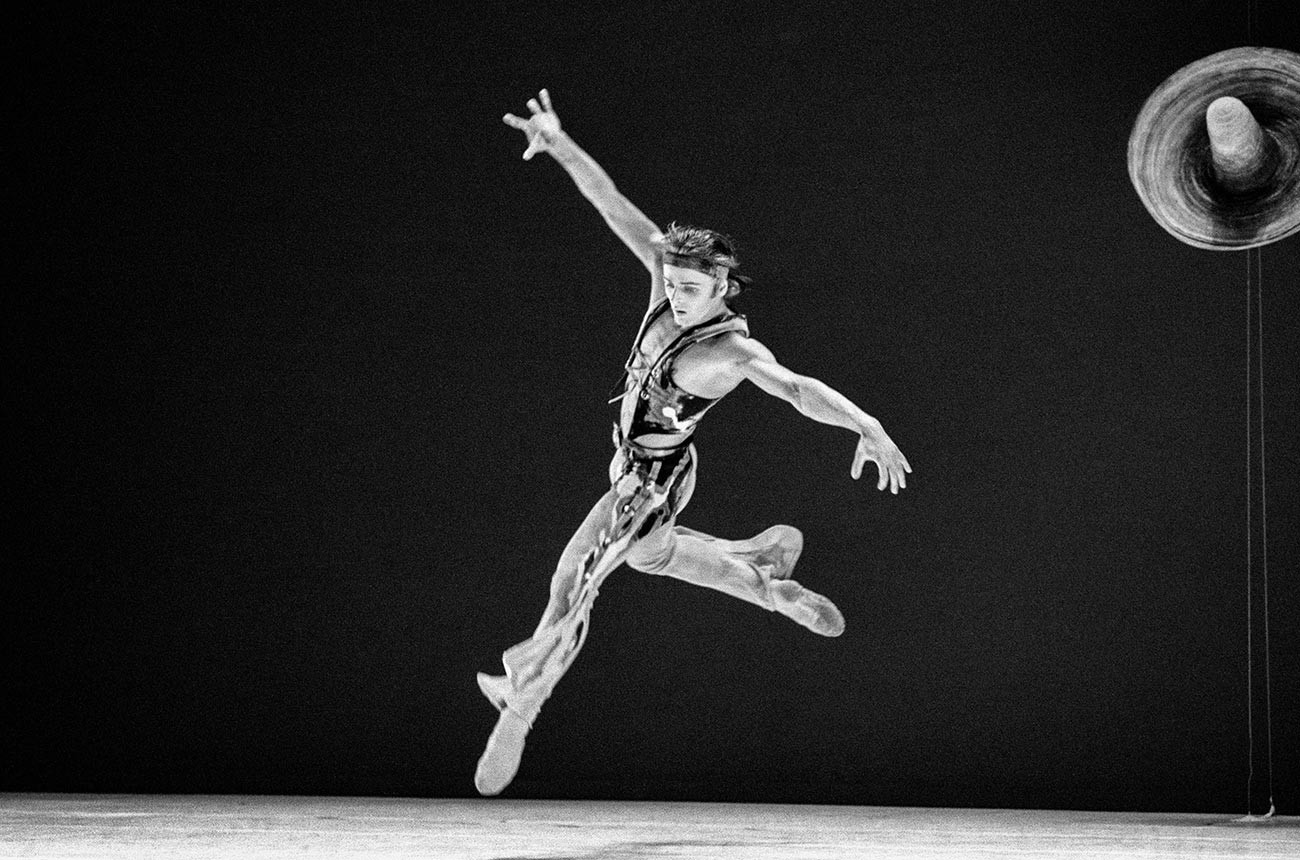
Mikhail Baryshnikov in Eliot Feld's 'Santa Fe Saga'.
Getty ImagesBaryshnikov created, staged and choreographed ‘The Nutcracker’, which premiered at New York City’s Metropolitan Opera House in 1977. Mikhail’s commanding performance and very presence on stage made the universally popular ballet even more special.
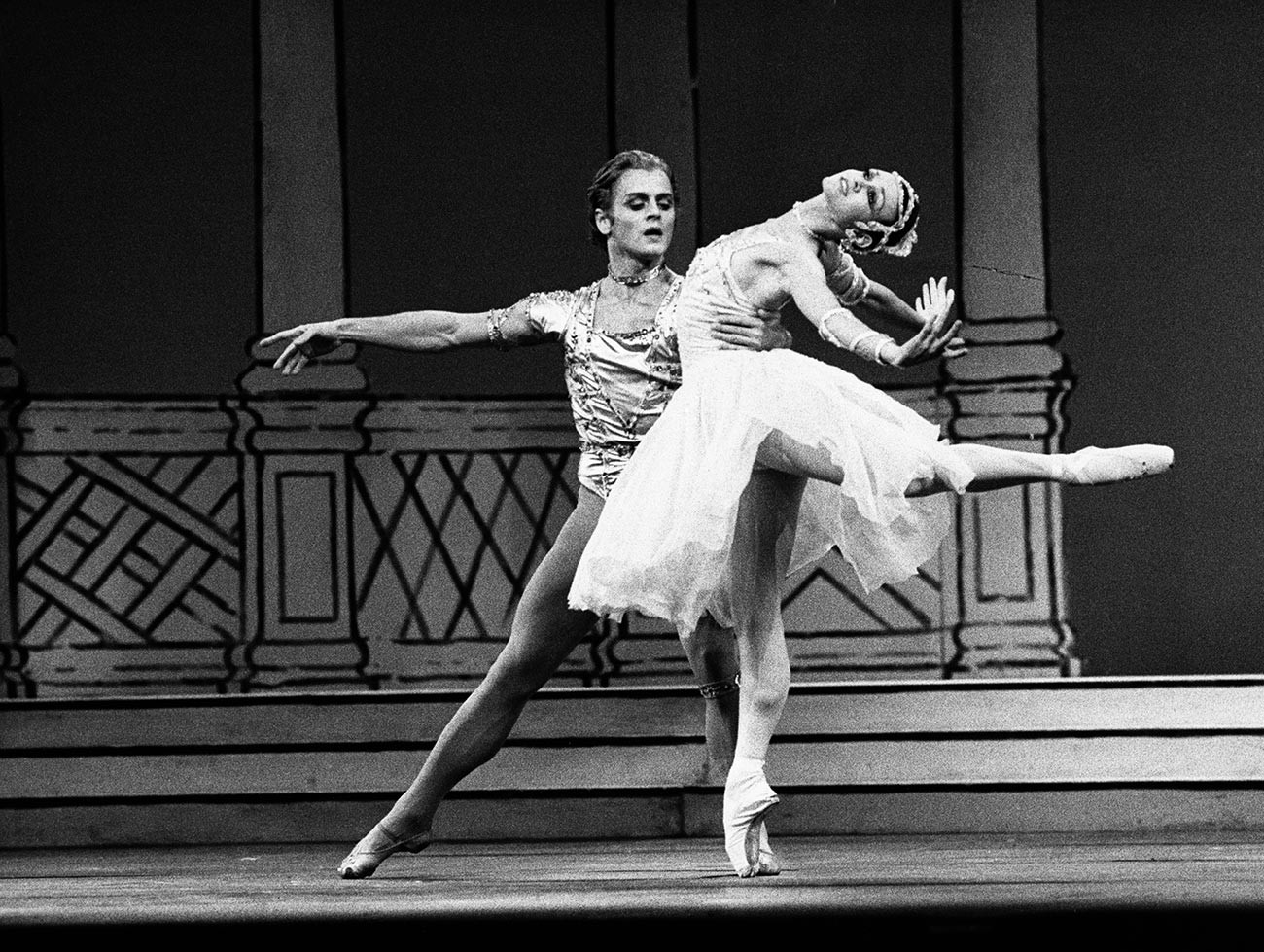
Mikhail Baryshnikov and Lesley Collier in 'Rhapsody' by Sir Frederick Ashton.
Getty ImagesIn the late 1970s, Baryshnikov joined New York City Ballet, where he worked with George Balanchine. The Russian-born choreographer (who revolutionized American classical ballet and whose real name was Balanchivadze) was certainly an influence on Baryshnikov. Mikhail delivered an astounding performance in ‘The Prodigal Son’ (by Sergei Prokofiev) and ‘Apollo’, set to the music by Igor Stravinsky. Balanchine spiced up Baryshnikov’s signature joie de vivre with blockbuster jumps and mature movements.
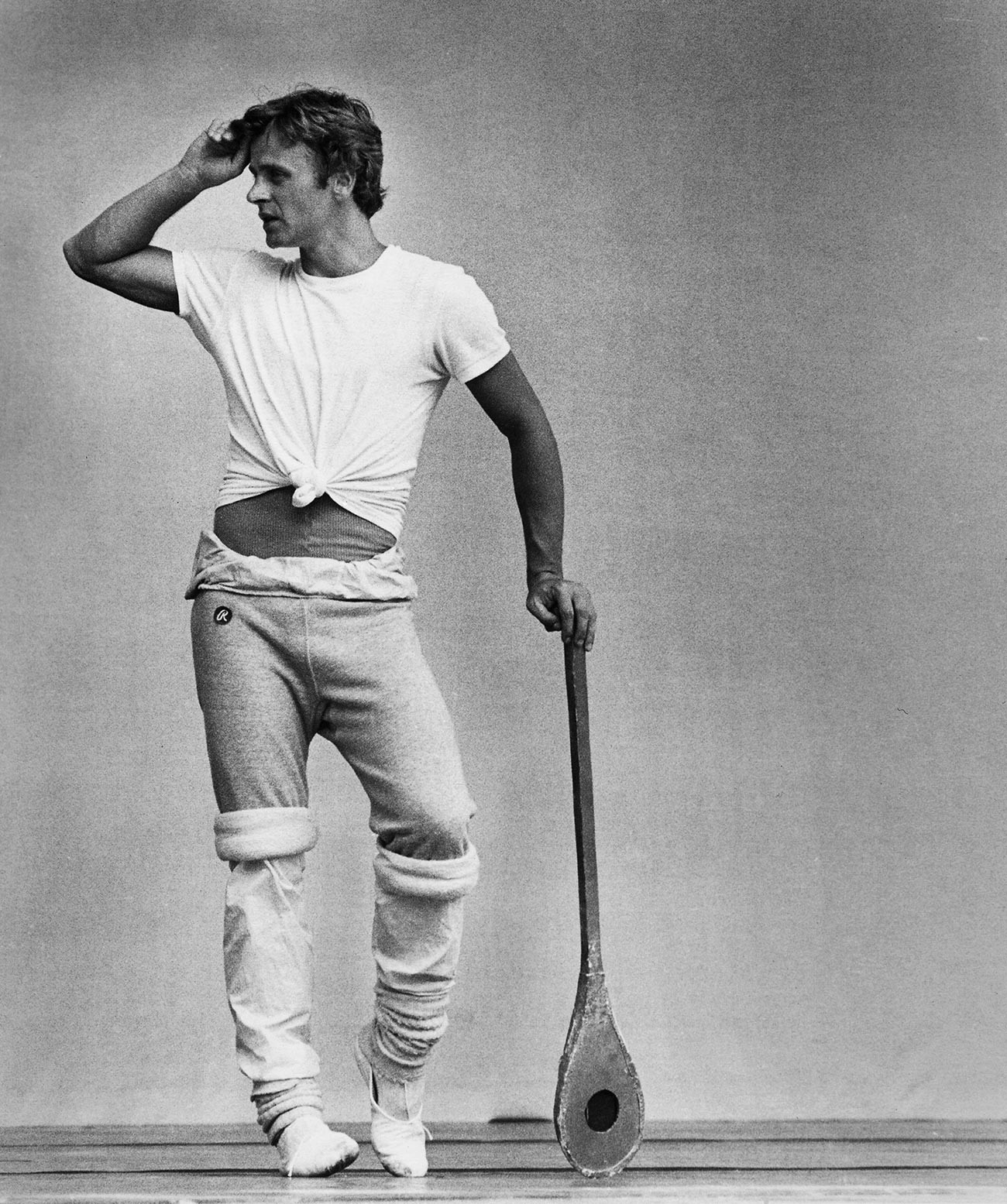
Baryshnikov rehearses for the revival of Stravinsky’s ballet, 'Apollo', choreographed by George Balanchine.
Getty ImagesBaryshnikov needed some space for choice and creativity, too. He didn’t want to limit himself exclusively to classics like ‘Don Quixote’. In 1979, he became artistic director of ABT. In this capacity, he shaped a new generation of dancers and choreographers.
Had Baryshnikov stayed in the Soviet Union, performing solely the classical repertoire, he wouldn’t have been able to open himself up to a real challenge – the search for freedom of expression. His ultimate dream was to work with the “new kids on the block”.
In the United States, Baryshnikov was smitten with contemporary choreography. Cutting-edge choreographers, such as Twyla Tharp (who helped catapult Baryshnikov’s career in contemporary dance), Jerome Robbins, Glen Tetley and American Dance Theater founder Alvin Ailey, truly broke the mold, turning their dance performances into a fountain of thoughts and movements.
In 2005, the father of four opened the Baryshnikov Arts Center in New York City, a creative laboratory for up-and-coming artists from across the world.
Known for his acting prowess and sex-appeal, Baryshnikov also had success on the silver screen. In the 1985 musical ‘White Nights’, his partners in crime were Hellen Mirren and Isabella Rossellini.
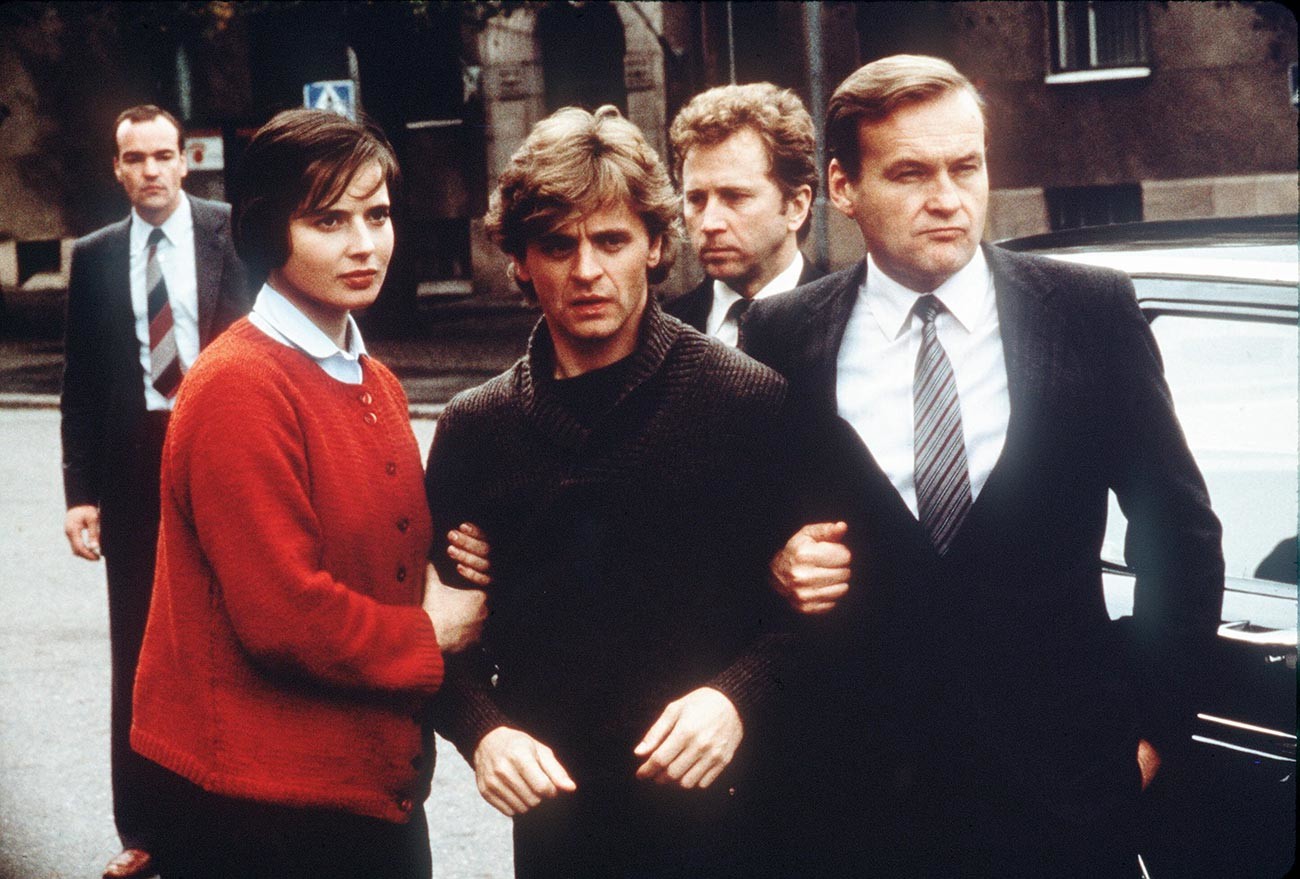
Isabella Rossellini and Mikhail Baryshnikov in 'White Nights'.
Global Look PressBaryshnikov played the central character in the quasi-autobiographical drama - a Soviet ballet dancer who defects from the Soviet Union. In a curious plot twist, the plane carrying him to a performance in Japan crash lands in Siberia. KGB agents were rubbing their hands in anticipation of meeting the runaway dancer.
In the movie’s memorable moment, tap-dancing star Gregory Hines and Baryshnikov dance together. Their dance is worth a thousand words.
In another captivating scene, Baryshnikov asks his compatriot Galina, played by the half-Russian British actress, Dame Helen Mirren: “Do you know what it means to be really free?”
Baryshnikov answers the multi-million-dollar question himself by performing a dance, set to Vladimir Vysotsky’s famous song ‘Capricious horses’ and choreographed by Twyla Tharp. It’s the movie’s best scene, the one that also defined Mikhail’s character.

'The Turning Point' by Herbert Ross, starring Leslie Browne and Mikhail Baryshnikov.
Global Look PressHis skills as an actor were also on public display in ‘The Turning Point’ (1977), starring Shirley MacLaine and Anne Bancroft. His portrayal of Russian dreamboat Yuri Kopeikine earned Baryshnikov an Academy Award nomination.
READ MORE: ‘The Big Four’ Soviet actors who tried to live out the American DREAM (PHOTOS)
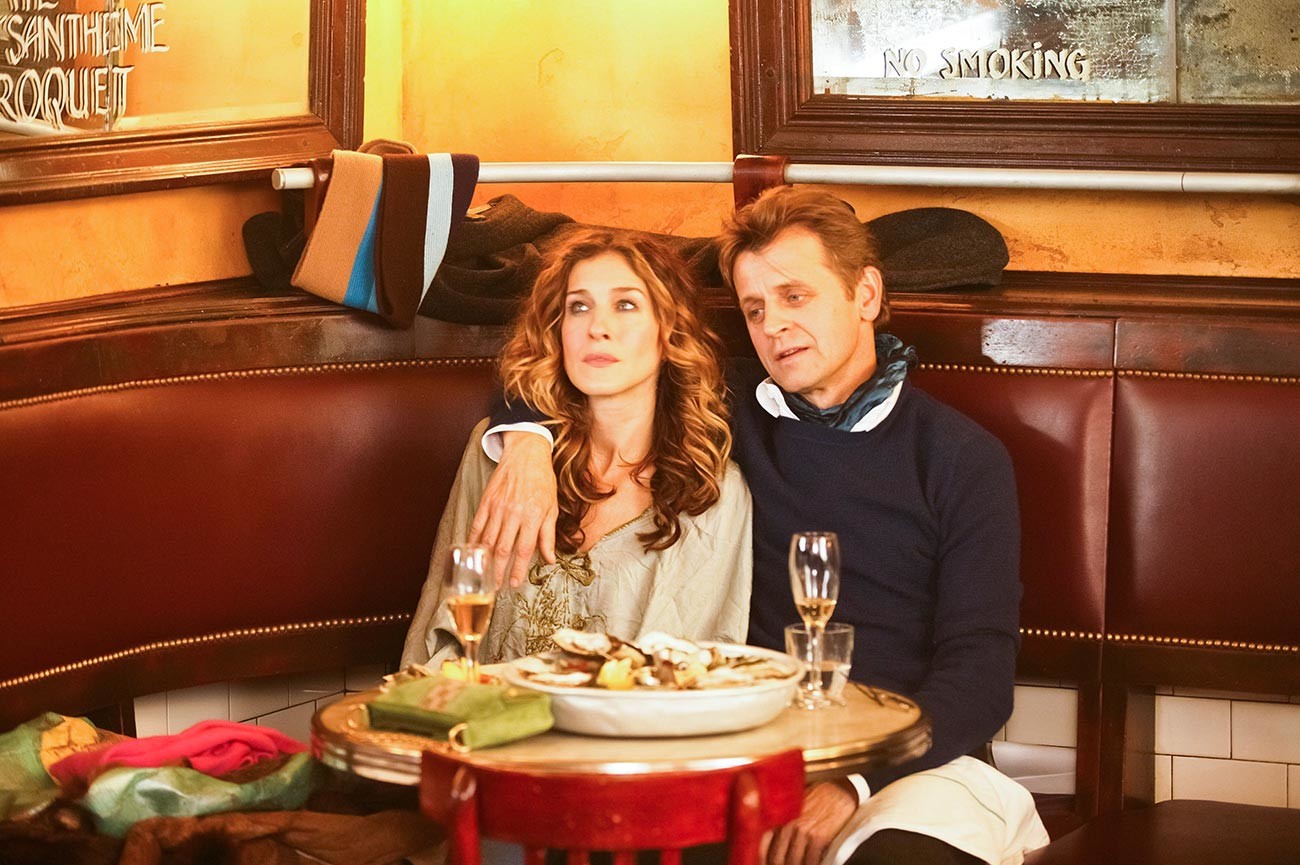
Sarah Jessica Parker and Mikhail Baryshnikov in 'Sex And The City.'
Legion MediaBaryshnikov’s appearance in the hit series of ‘Sex and the City’ (2004) as Carrie Bradshaw’s boyfriend Aleksandr Petrovsky was, by many accounts, a success. He thought it would only be for a couple months, but in reality, the Russian ballet icon ended up portraying Sarah Jessica Parker’s love interest on screen for a year. (FYI: Baryshnikov is happily married to former ballerina Lisa Rinehart.)
Misha, as everybody called him in America, performed on- and off-Broadway, making his long-awaited theater debut on Broadway in Franz Kafka’s ‘The Metamorphosis’. His portrayal of Gregor Samsa was worthy of standing ovation and a Tony Award nomination.
The multitalented artist also performed with ‘Cabaret’ star Liza Minnelli in a show aptly entitled ‘Baryshnikov on Broadway’. With their strong chemistry on stage, they were a good match – she sang, while he danced.

Liza Minnelli and Mikhail Baryshnikov in 1977.
Getty ImagesA self-made man and a man of action, Baryshnikov had a chance to share the stage with larger-than-life partners.
“I’ve been a saloon singer for a good many years now. And I never dreamed that anyone would want to use any of my songs for any cultural pursuit. And one day, I got a call from a very high-class lady named Twyla Tharp. She wanted to know if she could use one of our songs, which she could build a dance around for a boy dancer. And I thought, ‘Respectability at last!’ This boy dancer is here tonight and he promised to lend me a hand, or rather a foot for the occasion. Ladies and gentlemen, the brilliant Mikhail Baryshnikov!” Frank Sinatra said, opening their duo performance with his melancholic ‘One for My Baby’ song.
A tad pessimistic himself, Baryshnikov has always been a powerful intellectual force. It often seemed like he was dancing with his brain, paying attention to technical perfection, enhanced by intellectual confidence, flexibility and strength.

A true living legend of ballet, Baryshnikov is one of the greatest dancers in modern history.
Getty Images“He is a man of vigorous intellect and intuition,” Joseph Brodsky, Baryshnikov’s friend of 20 years, recalled. “A person who - among other things – can recite from memory more poems than me. It's very strange, but I swear I can't remember how I met Misha. But one thing is certain: he made a great impression on me and still does. Moreover, not at all by his skills as a dancer, I am by no means an expert in this area… Baryshnikov is an absolutely unique human being. He shares a birthday with Wolfgang Amadeus Mozart. And I think they have a lot in common.”
Apart from sharing a love for poetry, Baryshnikov and Brodsky, meanwhile, became co-owners of the Russian ‘Samovar’ restaurant in New York (where Aleksandr Petrovsky took Carry Bradshaw on their first date).
In 2015, Baryshnikov had a chance to pay homage to the renowned poet and Nobel Prize winner in his ‘Brodsky/Baryshnikov’ performance, staged by Latvian theater director Alvis Hermanis. Symbolically, the one-man production had its world premiere in Riga, where Mikhail grew up. Unlike his peers, Baryshnikov had never revisited the USSR, or later Russia, after his lucky escape. Apparently, he had reached a point of no return. Fortunately, he never stopped being a great admirer, and active participant, of Russian culture… and all that jazz.
“And what brought me to the theater, actually,” Baryshnikov recalled in an interview with U.S. talk show legend Larry King in 2002, “that regardless of whether you’re a Jew, Russian Armenian or Latvian, all those disparities are suddenly eliminated by stage light and one beautiful image of dance. And every - all those elements - are so irrelevant.”
In a groundbreaking career that spanned more than fifty years, Baryshnikov has been there, done that, but most importantly, he has done exactly what he wanted. Restless, but not reckless, in any circumstances he chose to act. Bravo!
If using any of Russia Beyond's content, partly or in full, always provide an active hyperlink to the original material.
Subscribe
to our newsletter!
Get the week's best stories straight to your inbox